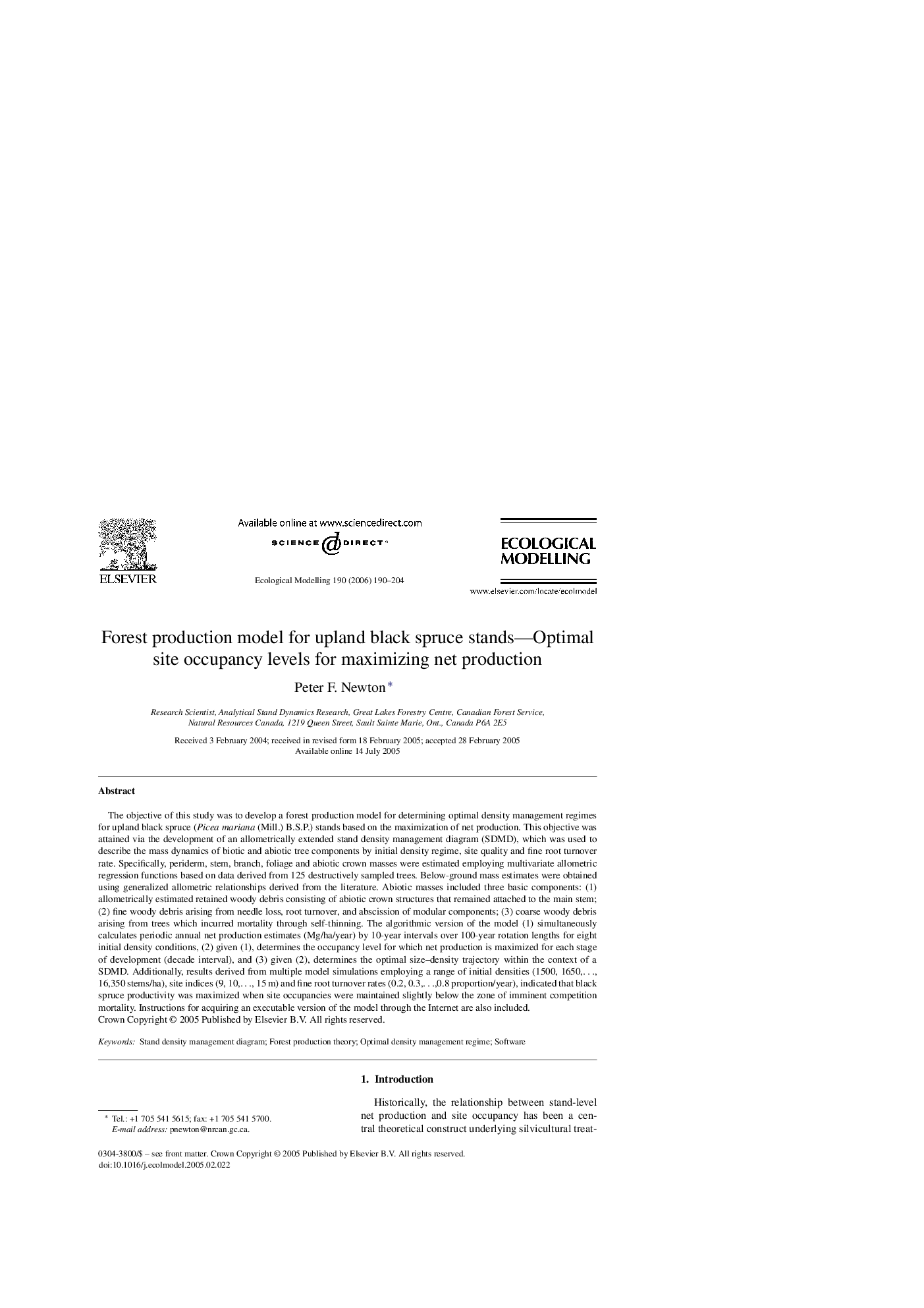| Article ID | Journal | Published Year | Pages | File Type |
|---|---|---|---|---|
| 4379409 | Ecological Modelling | 2006 | 15 Pages |
The objective of this study was to develop a forest production model for determining optimal density management regimes for upland black spruce (Picea mariana (Mill.) B.S.P.) stands based on the maximization of net production. This objective was attained via the development of an allometrically extended stand density management diagram (SDMD), which was used to describe the mass dynamics of biotic and abiotic tree components by initial density regime, site quality and fine root turnover rate. Specifically, periderm, stem, branch, foliage and abiotic crown masses were estimated employing multivariate allometric regression functions based on data derived from 125 destructively sampled trees. Below-ground mass estimates were obtained using generalized allometric relationships derived from the literature. Abiotic masses included three basic components: (1) allometrically estimated retained woody debris consisting of abiotic crown structures that remained attached to the main stem; (2) fine woody debris arising from needle loss, root turnover, and abscission of modular components; (3) coarse woody debris arising from trees which incurred mortality through self-thinning. The algorithmic version of the model (1) simultaneously calculates periodic annual net production estimates (Mg/ha/year) by 10-year intervals over 100-year rotation lengths for eight initial density conditions, (2) given (1), determines the occupancy level for which net production is maximized for each stage of development (decade interval), and (3) given (2), determines the optimal size–density trajectory within the context of a SDMD. Additionally, results derived from multiple model simulations employing a range of initial densities (1500, 1650,…, 16,350 stems/ha), site indices (9, 10,…, 15 m) and fine root turnover rates (0.2, 0.3,…,0.8 proportion/year), indicated that black spruce productivity was maximized when site occupancies were maintained slightly below the zone of imminent competition mortality. Instructions for acquiring an executable version of the model through the Internet are also included.
